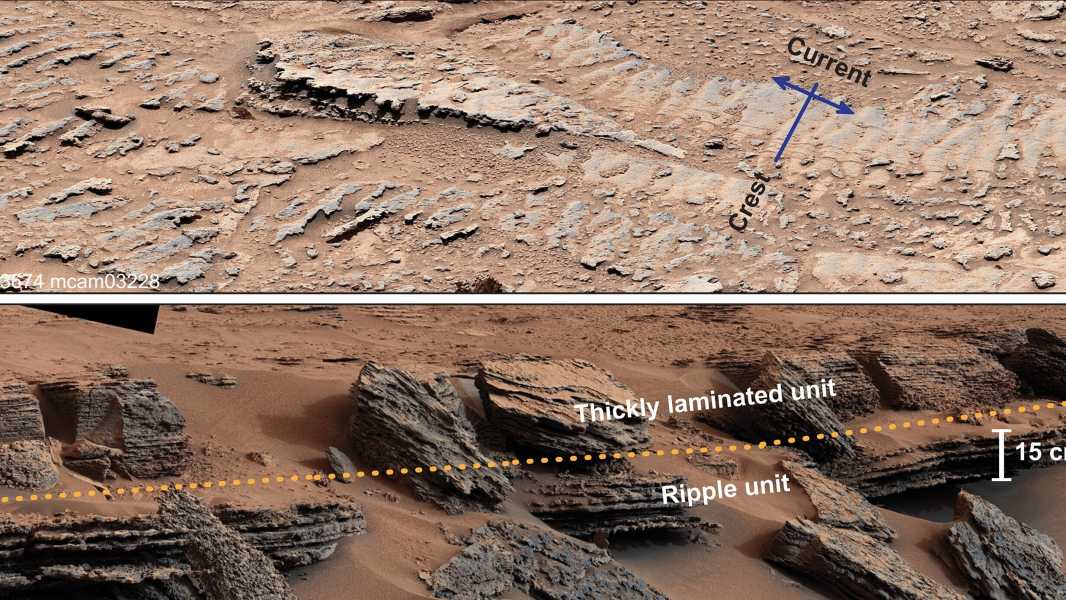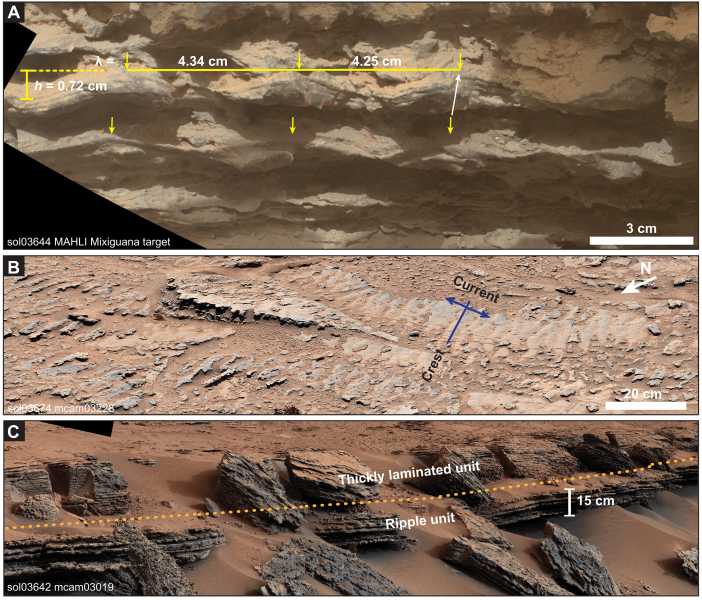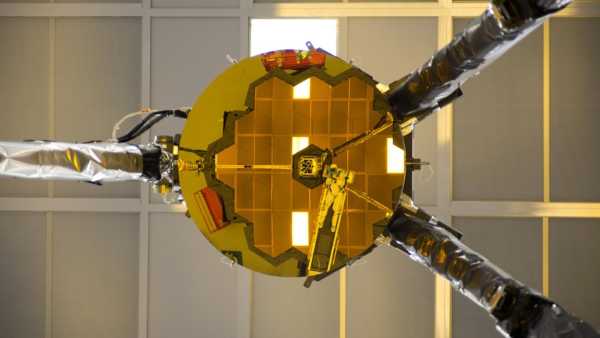
NASA's Curiosity rover has discovered symmetrical ripple marks at two different locations in Gale Crater on the Red Planet, providing strong evidence for the past existence of open liquid on Mars. (Image credit: NASA/JPL-Caltech/MSSS)
Researchers have found evidence that liquid water once interacted with the atmosphere in ancient shallow pools on Mars. The discovery suggests that not all of the Red Planet's water was frozen, as some theories of Martian climate suggest.
Planetary geologists and astronomers studying Mars have speculated for decades that water was likely present on the planet, dating back to NASA’s Mariner 9 mission capturing images of dry gullies in the 1970s. However, debate continues over the form that this water took and how long it lasted. Some models suggest that any liquid water on Mars’s surface would have been encased in layers of ice before disappearing.
But new data published Jan. 15 in the journal Science Advances tell a different story. The patterns captured by NASA’s Curiosity rover are known as ripples — small, ridge-like features that form on the banks of bodies of water. They imply that open liquid water must have flowed across the surface of Mars at some point in its history. The ripples were found in two separate pools of water in Gale Crater, which Curiosity has been exploring since August 2012.
“The ripple shape could only have occurred in water that was exposed to the atmosphere and wind,” said lead author Claire Mondro, a sedimentologist at the California Institute of Technology, in a statement.
Hope for life?
The scientists also studied the height and spacing of the wave structures to estimate the size of the body of water that formed them. The structures are about 0.2 inches (6 millimeters) tall and are spaced about 1.6 to 2 inches (4 to 5 centimeters) apart, indicating that they were created by small waves. Based on these measurements, the researchers estimate that the Martian lake was less than 2 meters (6.5 feet) deep.

Both of these dried-up ponds likely formed about 3.7 billion years ago, suggesting that Mars had a thick, warm enough atmosphere to support liquid water longer than previously thought — which could have interesting implications. “Increasing the time period that liquid water existed increases the chances of microbial life later in Mars’ history,” Mondro said. In other words: Life may have had a longer window to evolve on the Red Planet.
Much of Mars's atmosphere and surface water was
Sourse: www.livescience.com





